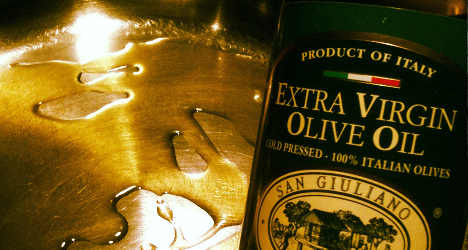Mongiello was speaking on Wednesday at a press conference in Rome for the launch of the Italian edition of the book Extravirginity: The sublime and scandalous world of olive oil by Tom Mueller, who was also present.
Mueller himself said that although the New York Times piece contained some truth, it was an inadequate summary of the situation and also contained “blatant errors” and was “not linked” to his book, which was cited as the sole source.
"The book is not against anyone; it is in favour of olive oil," he explained. "It tells the story of olive oil, and the people who produce it."
Mongiello said such articles were “dangerous” because they damaged the credibility of 'Made in Italy' food.
She added that Italy has made great strides in combatting “fake food” but admitted that more could be done. Earlier this month, the Italian parliament passed a motion to better regulate food labelling and impose penal sanctions and harsher fines for those breaching the regulations.
“We are more rigorous than the rest of Europe, more disciplined and more wary,” Mongiello said.
“The rest of Europe does not understand; for once it is Italy which is the model to be copied in order to make the market more equal, transparent and legal.”
She also spoke out against the British 'traffic light' system on food, which may soon be brought to Italy, calling this “another attack” on Italian foods including oil, cheese and pasta.
However, Mongiello and Mueller did not deny the reality of fake or corrupted 'Made in Italy' olive oil.
“We need to defend the 'Made in Italy' label and our products. We must be aware of fake food,” Mongiello said.
She explained that fake products had distorted the market, causing real producers of extra-virgin olive oil to close, and damaging Italy's reputation, market, and the consumers themselves, who think they are eating real Italian food.
Consumers should be taught how to recognize real extra-virgin oil, and celebrate the product, before it disappears, she added.
“Real Italian olive oil is good for you. And has even been shown to help cure degenerative diseases…anything under €6 for a bottle is not the real thing.”
Don't miss a story about Italy – Join us on Facebook and Twitter.




 Please whitelist us to continue reading.
Please whitelist us to continue reading.
Member comments